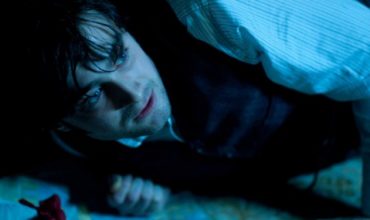The Mumbai terrorist attacks of 2008 were a series of shootings and bombings that occurred over four days from 26 November to 29 November. Ten men from the Pakistan-based Jihadist organisation Lashkar-e-Taiba killed more than 160 people and wounded 300-plus. There were twelve planned attacks; targets included taxis, a café, cinema, hospital, railway station and several hotels, including the luxury five-star Taj Mahal Palace Hotel. The Taj was chosen specifically because it was seen as a symbol of Indian wealth.
The movie HOTEL MUMBAI is an Australian, US and Indian co-production that focusses mainly on the events surrounding the attack and subsequent siege of the Taj. The story begins with the ten Lashkar-e-Taiba men coming ashore as they arrive by speedboat. Then we are shown Arjun (Dev Patel), a Sikh waiter preparing for his day. We watch as he takes care of his child and visits his wife. Eventually, he joins the rest of the staff at the Taj, who are doing the myriad of tasks required of a top-flight hotel. The story cuts back and forth between the hotel and the impending danger of the heavily-armed terrorists heading into the city.
The film reveals the faces and voices of the attackers. They are not shadowy demons about to wreak evil. They are real human beings about to perpetrate horrific acts of violence against unwitting, innocent victims. There is a deliberate documentary, fly-on-the-wall, feel to the visual coverage. We are introduced to a wealthy American couple (Armie Hammer and Nazanin Boniadi) arriving at the hotel with their baby and Australian nanny (Tilda-Cobham-Hervey). The minutiae of the day unfolds. The child is sick. The couple may be eating the restaurant that night. The staff are inspected to check their standards of grooming and uniforms. The hotel arranges for a luxury suite for a Russian businessman (Jason Isaacs) so he can party with expensive call-girls. Arjun is having a bad day at work and his boss Chef Oberoi (Anupam Kher) is considering sending him home. The fabric of the story is minutely and expertly woven and thus builds the tension unbearably.
When the violence arrives, it is brutal and shocking. The killing occurs at random and there is no way to predict who will be targeted next. Because this is a true story, not a Tom Clancy movie and Jack Ryan isn’t choppering in to save the day, we see the terrified and confused guests trying to work out what to do and where to go. They have no way of telling where the terrorists are exactly. They can hear machine gun fire and grenades going off as some people are murdered and others taken hostage.
The audience will identify with the plight of the staff and guests. In the absence of the Hollywood style heroics that we expect, instead there is the real-life sacrifice and bravery that occurred; the second-by-second decision-making and chance-taking by those staff members who chose to remain to save the 450-plus hotel guests.
First-time feature director Anthony Maras has made an extraordinary debut. His handling of the material is impressive. Maras co-wrote the screenplay with veteran writer John Collee (MASTER AND COMMANDER, HAPPY FEET). The storytelling is efficient and yet layered. Strands of class divisions, history and culture run beneath everything. Characters are sketched quickly, but not caricatured. Sometimes they are given unexpected moments, further details that might flip our first impressions.
HOTEL MUMBAI is described as a thriller and in one sense it fulfils these expectations. The truth of the story and the way it is told, rather overwhelms the idea of mere movie thrills. Although the characters are fictionalised composites (except for Chef Oberoi), Maras interviewed 40 of the survivors of the Taj attack and that truthfulness is evident. The resulting film is by turns bleak, terrifying, moving and rousing. It portrays some of the best and worst of humans and our actions.
Running time 2 hours 5 minutes. Rating (8/10)


